Posting a price list on your web site: does it work or fail?
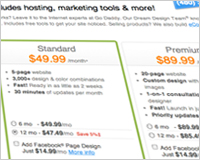 When I first saw a web site designer who had posted a laundry list of prices on his site, I gasped in horror. It created some buzz in the design circles in which I traveled. No one agreed with the concept. Then, a well-respected design firm owner announced he was going to try it.
He said that he thought by posting his prices, using a basic, bottom line cost, he would weed out the people who wanted bargain basement prices and he would save time of not having to deal with them for initial meetings and creative briefs, only to be told that the $10,000 he stated at for web sites was $9,750 too high.
It made sense when he put it that way. Figure the total amount of time one spends in a first meeting, listening to a prospective client talk about what they want, then explaining how your service works to them, following up with a short creative brief and then having to explain why it is the proper way to do a proper web site, he would cut out at least 75% of the people who are “just browsing” or looking at costs on their way to a crowdsourcing site.
When I first saw a web site designer who had posted a laundry list of prices on his site, I gasped in horror. It created some buzz in the design circles in which I traveled. No one agreed with the concept. Then, a well-respected design firm owner announced he was going to try it.
He said that he thought by posting his prices, using a basic, bottom line cost, he would weed out the people who wanted bargain basement prices and he would save time of not having to deal with them for initial meetings and creative briefs, only to be told that the $10,000 he stated at for web sites was $9,750 too high.
It made sense when he put it that way. Figure the total amount of time one spends in a first meeting, listening to a prospective client talk about what they want, then explaining how your service works to them, following up with a short creative brief and then having to explain why it is the proper way to do a proper web site, he would cut out at least 75% of the people who are “just browsing” or looking at costs on their way to a crowdsourcing site.
The discussion begins…
The internet, technology itself, has affected the way we all do business. The rise of Amazon.com and the effect it has had on certain retail sectors (i.e. retail toy and book sales). We have gotten use to the ease of point-and-click buying. Personally, I prefer to hold the product in my hands before buying. I like looking at the package, flipping through pages, trying on clothes and shoes BEFORE considering the purchase. Unfortunately, that option is disappearing. Some would say that’s a con and not a pro but apparently society doesn’t agree as evident in the bankruptcy and closing of retail stores and chains. How does this affect the design industry? There will always be the design projects that need the personal touch. The meetings, the briefs, the back and forth and the negotiations for the fees involved…followed by the arguing and non-payment thereof. When it happens for the big projects, it’s necessary but, having many large corporate clients, I’m seeing increasing requests for flat out pricing that allows “flexibility” on my part as the vendor. As one client put it when they returned my contract with an addendum added to the list of service provided for the flat fee, “and anything else we deem necessary.” I didn’t accept that addition and lost the project. To me, it sounded as if the open-ended wording would have me providing service until I died. Most people misunderstand the concept of a price list for creative services. Under much discussion and anger amongst some of my local peers was an ad posted by a designer that promised ANY design job for $299 with unlimited revisions. ANY? UNLIMITED? We were outraged that the designer had turned our industry into a discount shoe store. We discussed taking up a collection for the $299 and then hiring the designer to create a web site and keep asking for changes to see how far he/she would go before breaking. When people we all knew started admitting to considering adding a price list, the laughter subsided and the discussions ensued. How would one approach creating a price list that could turn a profit without leaving the question of changes a client could request open to interpretation? What kind of clients would go for it? Would it put off some clients? We started formulating what a price list would contain. We all had a good idea of how long an average job took to complete and everyone had his/her hourly rate in mind. We were frank about what a logo would cost when quoted to a client with the usual research, sketches, changes and delivery. We discussed how much we all charged up front and how long the thirty-day payments took to receive once the job was delivered. It seems payments in thirty days were getting rare among our clients and arguments about upfront deposits were increasing. The first thing we all agreed upon was that using a price list would include a 50% deposit with the final payment due upon delivery. As files were emailed by most of us or uploaded for digital projects such as web sites, it would be easy to hold the job for ransom until the final payment was made. There was discussion about using PayPal or a credit card and the fees involved. The answer was to just incorporate those fees into the price. As with anything ordered online, we figured that clients would be willing to use their credit card for payments. It’s instant, easy, and common these days when making any purchase. In creating a price list, it would need to leave no holes or misunderstanding – this is what you pay and this is what you get. Most people argue that any list can’t cover everything a client will demand. By the same thinking, neither can a contract for a project. As we all know, a contract means nothing when a client starts arguing about wanting what they want despite what was agreed in the beginning. When I was working the wonderful service position of serving obese idiots greasy burgers and fries, they would argue over having to pay to supersize their disgusting food orders. A dollar was too much. So, what happens when the same slobs are ordering a web site and are told they have to pay $500 for supersizing their logo? Looking across the plastic counter into the eyes of these cheap bastards, I would have to smile when they scolded me for never hearing the phrase, “the customer is always right!” The manager would inevitably give them their supersized poison without charging for it. The day I quit that nightmare job, I had the pleasure of answering those who used the aforementioned phrase with, “only from people who want something for free. Pay the extra dollar and sit down or I’ll spit in your food!” Aside from that amusing anecdote, which still haunts me when I drive past a fast food place, there are three things one can count upon: The first is that people like to see the posted price for whatever it is they are considering buying and second: People have trouble negotiating for a price (hence the multitude of articles on how to negotiate the price when buying a car). The third thing is: Even when it's spelled out in front of them, people just don't read or understand price lists! 90% of the morons I waited on couldn't order a simple burger, fries, and soda without help from me. Creatives run up against the same problem but with less grease. I too often hear my peer designers complain about a client who wants something extra, a complete change, to renegotiate the original price and other problems we usually encounter. When I ask about the contract they have with the client, more often than not, they say they don’t have a contract. Why? Fear! They think that asking a client for a contract will cause the client to not give them the project. By the same token, they don’t feel comfortable saying “no” to lowering the price when the client starts negotiating. A friend of mine who is known for her biting humor tells me:“When I’m asked how much I charge? I answer, more than your average crack-addicted hooker but significantly less than a small agency." “I don't list prices on my site because I don't want to be held to it. I have a base price, which I convey, in person or over the phone, and then I add an "annoyance" tax as needed — in the form of extra hours over what I'd normally charge. Don't want to send me revisions in one nice, tidy email? Boom! Annoyance tax applied. That 2-minute change just cost them 15 minutes. Every single time!”
Let’s look at some price posting examples…
Here are some companies that post a price for design services. Let’s look at how they do it. The first example from countrylovin.com has the weakest self-protection terms. It is exactly what people fear will be the problem with putting up a price list. There’s no word about revisions, delivery, payments, etc. A basic “here’s the cost.”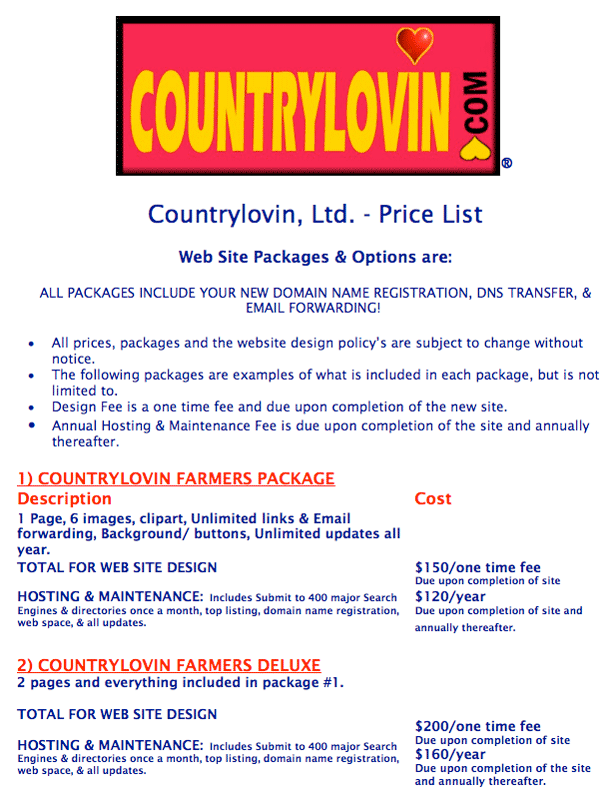 GoDaddy.com, known for their slightly more then semi-pornographic commercials, is a very popular web hosting company and, as with most hosting companies, offers web design. There’s the option for a do it yourself, drag-and-drop, template and stock image site for an ongoing, monthly fee. Quality isn’t part of the price but how many small businesses and sole-proprietorships really know or care about cost? When designers complain that they are being asked for free work, it’s by those who have seen the $4.99 a month option.
When it comes to custom web design for clients, their price list is presented in two parts. The first part is a quick overview of “standard” and “premium” design but it isn’t a one-time fee. Maybe they think prospective customers won’t do the math of what the monthly fee will add up to in six months or a year. Of course, what happens to your “custom designed site” once you drop the service? I can’t seem to find any information on that.
GoDaddy.com, known for their slightly more then semi-pornographic commercials, is a very popular web hosting company and, as with most hosting companies, offers web design. There’s the option for a do it yourself, drag-and-drop, template and stock image site for an ongoing, monthly fee. Quality isn’t part of the price but how many small businesses and sole-proprietorships really know or care about cost? When designers complain that they are being asked for free work, it’s by those who have seen the $4.99 a month option.
When it comes to custom web design for clients, their price list is presented in two parts. The first part is a quick overview of “standard” and “premium” design but it isn’t a one-time fee. Maybe they think prospective customers won’t do the math of what the monthly fee will add up to in six months or a year. Of course, what happens to your “custom designed site” once you drop the service? I can’t seem to find any information on that.

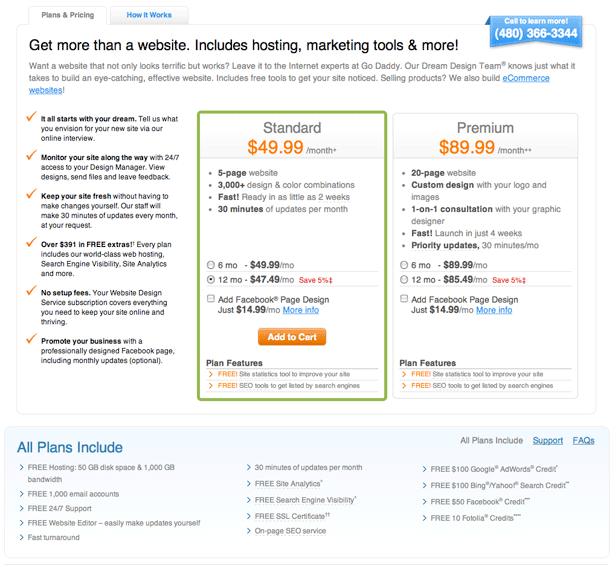
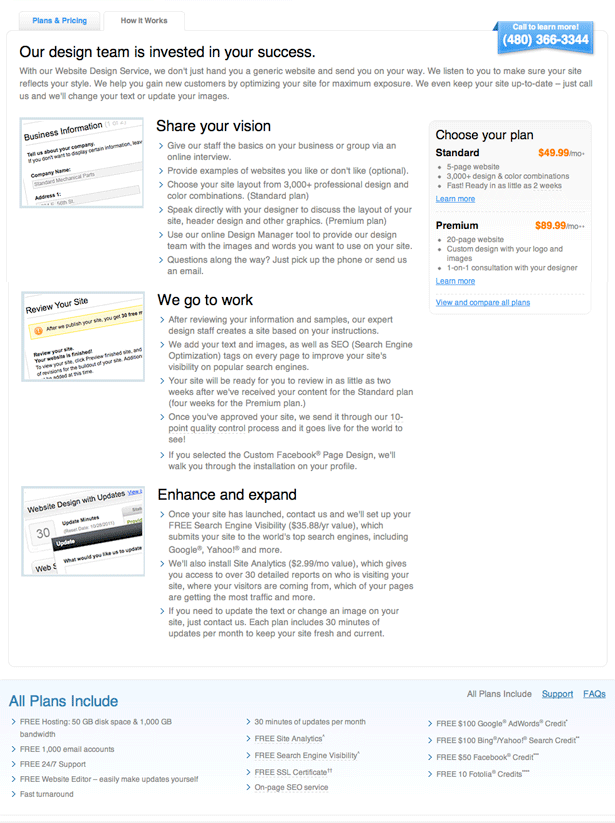 Still, the prices are…“competitive” and although there might be outsourcing and templates available for basic HTML to get a head start on the “custom design,” only those inside GoDaddy.com truly know…unless they comment on this article.
One thing that cannot be ignored, if you look at what is included in both custom packages: There is almost no way for a freelancer or design studio to compete with these prices.
Triad Web Design is yet another contender in the rising number of price list companies that are increasing. Their flat rate includes, among a laundry list of services, “unlimited revisions.” Whether they are off shore outsourced isn’t a concern – they are competition that must be considered with price levels set by freelancers and design firms alike.
Still, the prices are…“competitive” and although there might be outsourcing and templates available for basic HTML to get a head start on the “custom design,” only those inside GoDaddy.com truly know…unless they comment on this article.
One thing that cannot be ignored, if you look at what is included in both custom packages: There is almost no way for a freelancer or design studio to compete with these prices.
Triad Web Design is yet another contender in the rising number of price list companies that are increasing. Their flat rate includes, among a laundry list of services, “unlimited revisions.” Whether they are off shore outsourced isn’t a concern – they are competition that must be considered with price levels set by freelancers and design firms alike.
 While I detest the idea of crowdsourcing, it is a practice that has taken hold of our business. Here’s one of the companies that run these “design contests.” Just look at the prices of the completed sites.
While I detest the idea of crowdsourcing, it is a practice that has taken hold of our business. Here’s one of the companies that run these “design contests.” Just look at the prices of the completed sites.
 One question that arises is that of revisions. Unfortunately, in the FAQ section, it posts the question of, “can I get designers to revise the designs they created for me?”
The answer is, “absolutely. Designers thrive on guidance, so the more feedback you provide, the better the quality of your finished product.”
I don’t know if this means that once the “judging” is over, the client can request endless revisions for the set bid or there are additional fees. The mere fact they write, “designers thrive on guidance” has me throwing up forever. I mean, there’s guidance and then there’s endless second-guessing. Get me a new, empty bucket, please.
This "offshore" company offers ridiculously low prices but the inclusion of "USD" (U.S. Dollars) shows it's aimed at an American customer base. With prices like these, you might as well give up design, join the armed forces, and kill everyone in the nation that provides this cheap work!
One question that arises is that of revisions. Unfortunately, in the FAQ section, it posts the question of, “can I get designers to revise the designs they created for me?”
The answer is, “absolutely. Designers thrive on guidance, so the more feedback you provide, the better the quality of your finished product.”
I don’t know if this means that once the “judging” is over, the client can request endless revisions for the set bid or there are additional fees. The mere fact they write, “designers thrive on guidance” has me throwing up forever. I mean, there’s guidance and then there’s endless second-guessing. Get me a new, empty bucket, please.
This "offshore" company offers ridiculously low prices but the inclusion of "USD" (U.S. Dollars) shows it's aimed at an American customer base. With prices like these, you might as well give up design, join the armed forces, and kill everyone in the nation that provides this cheap work!
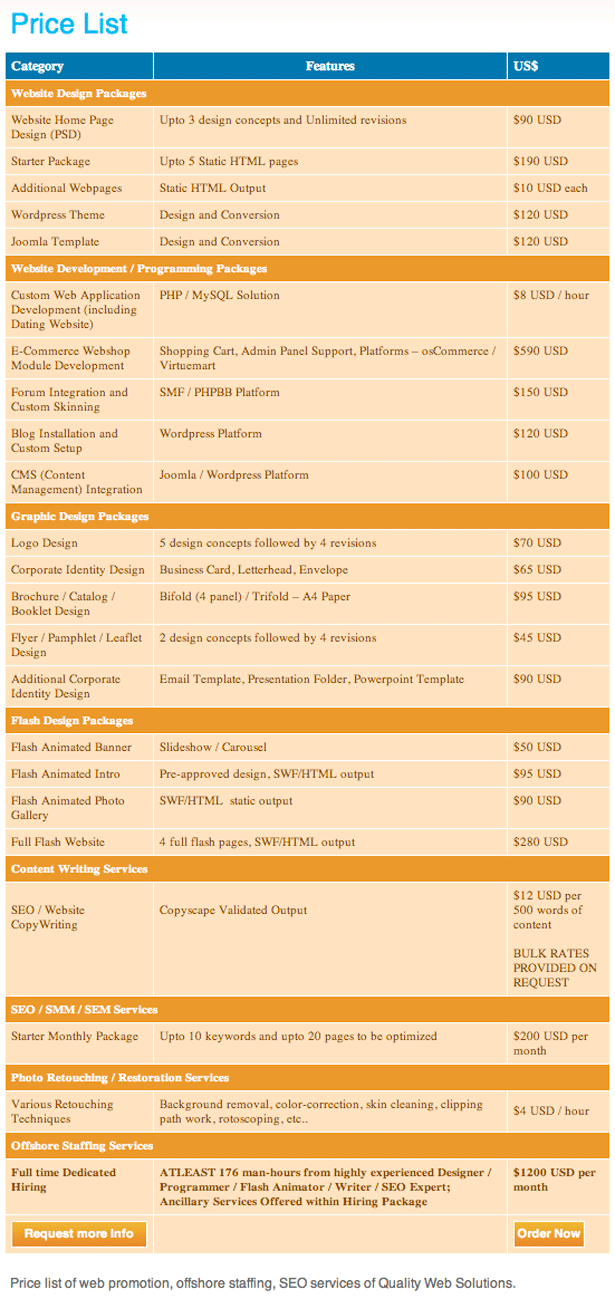
Some other opinions…
Having put the question of price lists on LinkedIn, I received some interesting opinions. Unfortunately, as it’s open to anyone, there were some maniacal responses, too. One person’s answer showed a good amount of time and thought to formulate her answer:I would not post a price list on my website because the majority of my projects are quoted in lump sum with milestones for various deliverables. While my lump sum is based upon my hourly rate, I determine the level of effort on the entirety of the project and not on exactly the length of time it's going to take me. By posting fixed prices, the customer might get fixated on the hourly rate or on fixed lump sums for projects instead of my estimate of the level of effort. I can give an example: Not all logo projects are created equal. On the one hand, a new client contacts me to create a logo for them. They want a text type logo, with very simple colors and a small graphic. They leave the design completely up to me with a few color guidelines. For such a simple project, I would charge $70 - 105 for two logo designs, and then have the client take elements of both or choose one as the final. My usual rate is $35 (per hour). On the other hand, I could have a client contact me for a logo and they want 5 distinct elements, an illustration, a tag line, and different color schemes to try. I would end up charging a lot more than $70-105! If I had put $70-105 on my website as my Logo Design fee, then I would be stuck when Client No. 2 comes around and brings me their laundry list of requirements. I could still give them a lump fee proposal, but it would be on what I believe their project requires...not what my website says it will be. In short, placing a price list on your website may put you in a position where you have to bargain for a better rate or fee if you feel a project requires more work than customary.Unfortunately, this person is not a full-time professional designer (and very limited part-time, as per her LinkedIn profile), as her rates attest and help lower the bar for full time designers. She does, however, bring up one of the arguments for not putting prices on one’s web site: Flexibility. Unless you can really judge the time it takes to execute a project, a flat rate can be a money-losing possibility. To keep extraneous changes from draining the fee, what is promised under the price would have to be iron clad with an hourly change rate listed for work above and beyond the flat fee. Giving unlimited revisions, as listed in some of the price lists shown, as examples would break you and your ability to make a profit. Someone involved in the creative business but not a designer imparts:
The upside = it makes the value of your work non-negotiable. The downside = it makes the value of your work non-negotiable. If your prices are set for all clients regardless and do not change, then by all means. However, if you want room to raise or lower prices on the value of a client, then don't post them.An interesting observation but one can change prices easily on their site as needed. The “value” of a client is an interesting concept. What do you do if a client who may represent regular business is turned off by your price list? As someone who has heard the old promise of “do this for $XX dollars now and in the future, it’ll be $XXXXXXX,” I have little faith in return clients based on price. In my experience, I retain clients due to the value of WORK. Another designer adds:
I price all my work on a project basis after I've had a conversation and an opportunity to review what's needed. Yes I have an hourly rate. Do I ever charge or reveal that hourly rate? No. It's always per project. I give a price that I think is fair to both parties, if someone chooses to take it, great...if not...great. If they don't like it, then they've just been weeded out.Again addressing the question of posting prices, one commenter said:
I would also have a disclaimer allowing you to alter the prices so a customer doesn't see them say in February, you raise them in March, then they come back in June, and ask for the February price.This is very true! As with giving a prospective client a written quote in February and then having them return in June and demand the same quote, even if you have raised you rates (perhaps material costs have increased, office space cost, equipment rent, etc.), what can you do? There has long been the agreement among designers that a written quote should have a time period of two to four weeks in which that quote is considered “good.” You can honor it months later if you have no need to raise the quote or wish to gain the client but, if the price is changed on your site in March and someone comes back in June and demands February prices, I believe that’s a red flag that you don’t want to get involved with such a client…and would only end up spitting on their burger! Legally, if the price is posted on your site, even if it has changed, you are in the right. How many people have sued food markets for raising prices after one week? How many people thought their burgers weren’t as delicious without my spit on them and felt cheated? One respondent wrote this excerpt:
Since each assignment, client, approach, strategy, and deliverable is different (or should be), it would be difficult to sell a pre-packaged solution associated with a fee that is the “right” solution for a client. I guess if you are in the ‘drive-thru’ design business, then posting your fees would be appropriate and go ahead and offer them the option to supersize their logo for an extra fee.Price lists don’t have to be a just a “one-size fits all” practice. The price list is like a menu with available items that a prospect picks from and then, after they have seen the total and the terms and clicks the accept button, the next step should be the meeting to discuss needs and the addition/deletion of items needed for the client’s needs. THEN they get a link to pay the deposit before the job starts. A “relationship marketing specialist” adds a candid view:
Sometimes it works as it certainly weeds out those who won't invest, other times it can scare off a potential client who simply needs to interface with you to get comfortable enough to invest. There is not absolute answer here. Personally, I prefer transparency but that is actually rare.One of the few web and graphic designers who weighed in on the question posted:
Pricing can be a barrier to sales, on the other hand if the quality of your work is stunning people may make the assumption they can't afford you. My suggestion is to have a low, medium and high rate card that you submit via email after initial contact with the client. And that you also have "rate ranges" i.e. starting as low as...($30-$50/HR) for certain types of work, etc. The reason for this is that projects for individuals vs. companies will have different levels of involvement and resources associated with them even if it is the same type of work like a logo design, for example. Doing this for an individual starting their first company, vs. doing a brand refresh logo design for an established company with a regional presence involves vastly different amounts of research, revisions, and attention to detail, not to mention the time in communicating with the parties involved will be different (one decision maker vs. design by committee). So in a scenario like that it’s only fair that they pay differently. They are getting a different level of service (not necessarily a different quality). A well-made contact form with clear instructions should direct them to contact you for rates and quotes. Estimate calculators are good, but sometimes people get that "quoted price" fixed in their mind and when you discuss project details with them they get too attached to that number.A respondent put it very succinctly:
Try it and if it doesn’t work, stop it. If you want to try it both ways, try an A/B testing.It’s not unheard of to test market an initiative. One has to consider what the appearance of a price list would do when viewed by a regular client. For A/B testing, you would need an entirely new site for new prospects and that presents too many problems and upfront costs. A design firm in England has found a unique middle ground to this question. Promo Design hits the "process," "value," and samples of their work right up front on their home page. Their contact page asks the PROSPECT to layout all of their needs AND budget before the first contact is ever made. The pulldown menu of budget will act to weed out the clients looking for a bargain but it still gives the salesperson at Promo a chance to negotiate the work and fee. Seems like a good approach!
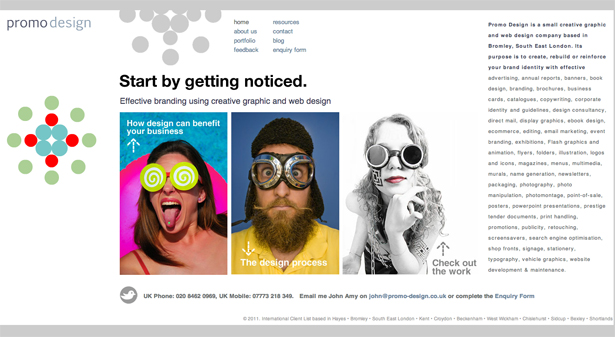
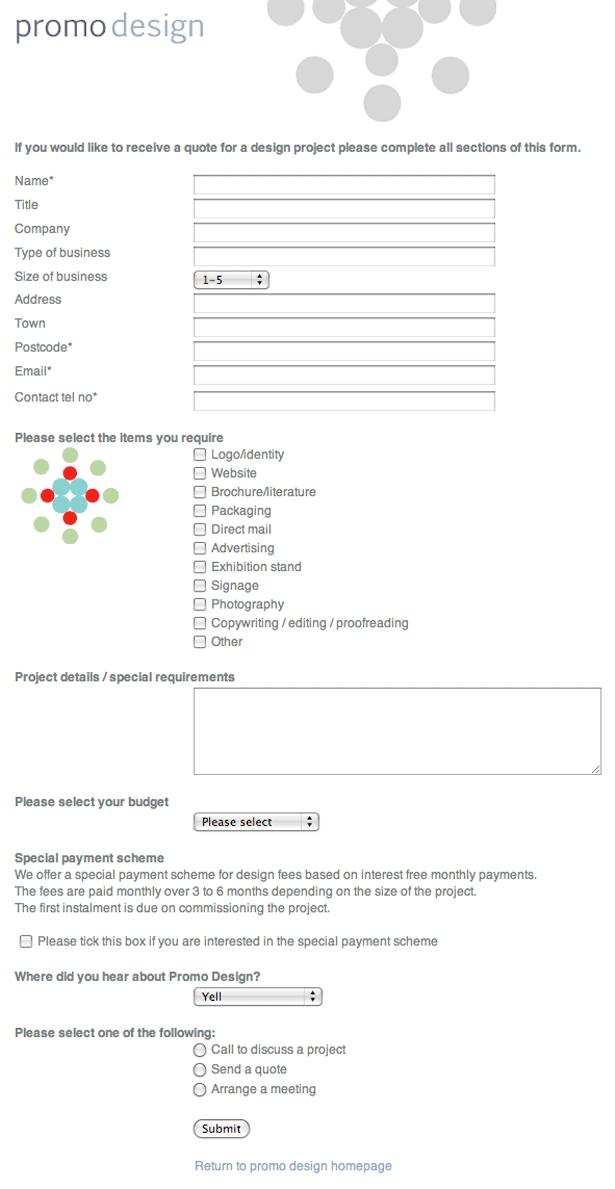
In conclusion…if there is one
I shouldn’t be too hard on those who ventured to offer their opinions. They are, of course opinions and this is something that is just coming to the surface in many industries. Out of the fifteen answers I received on LinkedIn, almost all the respondents agreed that they would rather have a consultation with the client first and prove the value of their service and then negotiate the price. Some asserted that a fixed price left no room for negotiation or any misunderstandings. Personally, I think no matter how much things are spelled out, people will either not read the whole agreement or misinterpret the terms, causing problems after the fact. Has the industry or society evolved (or de-evolved as some would argue), to a point and click type of purchasing? ARE people looking for price and not “value?” Large corporations routinely ask advertising agencies to make presentations on spec to gain an account and then negotiate the fee. Is web site surfing for the purpose of viewing design samples and prices really any different? We unleashed the internet and failed to watch it as it grew almost without us. Entrepreneurs sought a better way and innovated sales and customer service. Now we need to follow suit or be left behind like those who insisted in producing buggy whips while other leather companies retooled and made car seats for Henry Ford. It’s a hard question to answer. Where is the future taking our field?Speider Schneider
Speider Schneider is a former member of The Usual Gang of Idiots at MAD Magazine and has designed products for Disney/Pixar, Warner Bros., Harley-Davidson, ESPN, Mattel, DC and Marvel Comics, Cartoon Network and Nickelodeon among other notable companies. Speider is a former member of the board for the Graphic Artists Guild, co-chair of the GAG Professional Practices Committee and a former board member of the Society of Illustrators. Follow him on Twitter @speider or add him on Google+
Read Next
15 Best New Fonts, July 2024
Welcome to our monthly roundup of the best fonts we’ve found online in the last four weeks. This month, there are fewer…
By Ben Moss
20 Best New Websites, July 2024
Welcome to July’s round up of websites to inspire you. This month’s collection ranges from the most stripped-back…
Top 7 WordPress Plugins for 2024: Enhance Your Site's Performance
WordPress is a hands-down favorite of website designers and developers. Renowned for its flexibility and ease of use,…
By WDD Staff
Exciting New Tools for Designers, July 2024
Welcome to this July’s collection of tools, gathered from around the web over the past month. We hope you’ll find…
3 Essential Design Trends, July 2024
Add some summer sizzle to your design projects with trendy website elements. Learn what's trending and how to use these…
15 Best New Fonts, June 2024
Welcome to our roundup of the best new fonts we’ve found online in the last month. This month, there are notably fewer…
By Ben Moss
20 Best New Websites, June 2024
Arranging content in an easily accessible way is the backbone of any user-friendly website. A good website will present…
Exciting New Tools for Designers, June 2024
In this month’s roundup of the best tools for web designers and developers, we’ll explore a range of new and noteworthy…
3 Essential Design Trends, June 2024
Summer is off to a fun start with some highly dramatic website design trends showing up in projects. Let's dive in!
15 Best New Fonts, May 2024
In this month’s edition, there are lots of historically-inspired typefaces, more of the growing trend for French…
By Ben Moss
How to Reduce The Carbon Footprint of Your Website
On average, a web page produces 4.61 grams of CO2 for every page view; for whole sites, that amounts to hundreds of KG…
By Simon Sterne
20 Best New Websites, May 2024
Welcome to May’s compilation of the best sites on the web. This month we’re focused on color for younger humans,…














